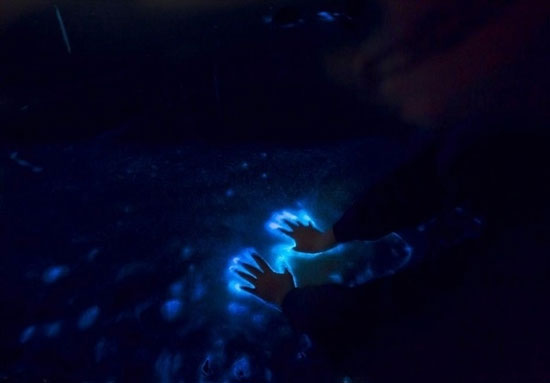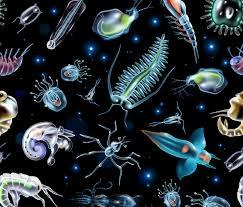Introduction
Qeshm Island, known for its natural beauty and historical significance, is a popular destination in the Persian Gulf. One of the most astonishing and captivating natural phenomena in this island is the glowing phytoplankton, which transforms the shores of Qeshm into a luminous display during dark nights. This phenomenon, known as bioluminescence, adds a unique charm to any trip to the island and offers visitors an unparalleled experience.

What is Phytoplankton?
Phytoplankton are microscopic, plant-like organisms that live in the open waters of seas and oceans. As the foundation of the marine food chain, these organisms play a crucial role in aquatic ecosystems. Through photosynthesis, phytoplankton convert solar energy into organic matter and produce oxygen. They also play a key role in absorbing carbon dioxide and generating oxygen globally, thus contributing to the Earth’s climate balance.
The Bioluminescence Phenomenon
Bioluminescence refers to the phenomenon where living organisms, such as certain species of phytoplankton, produce light. This light is typically generated by a chemical reaction between an enzyme called luciferase and a molecule called luciferin. In Qeshm, when the seawater is disturbed by these microscopic organisms, a bright blue light is emitted, making this phenomenon a major attraction for the island.

Experiencing the Glowing Phytoplankton in Qeshm
One of the best places to observe bioluminescence in Qeshm is on the southern and southwestern coasts of the island, where these microscopic organisms glow beautifully in the sea during dark nights. The optimal time to witness this phenomenon is usually during the summer and fall months, when water temperatures and biological conditions are more favorable for the growth and activity of phytoplankton.
Important Tips for Observation:
- Timing: Dark, moonless nights are the best times to observe the glowing phytoplankton. Complete darkness helps in better viewing of the bioluminescent light.
- Location: Beaches free from artificial lights, such as those near Hengam Island and the Chahkooh Canyon, are ideal spots for witnessing this phenomenon.
- Weather: Warm and humid weather creates the perfect conditions for observing this natural wonder.

Biological Importance of Phytoplankton
Phytoplankton play a very important role in marine environments. They produce oxygen and absorb carbon dioxide, helping to mitigate climate change. Additionally, phytoplankton serve as the primary food source for many marine organisms such as fish and zooplankton.
Bioluminescence in phytoplankton can also act as a defense mechanism. When these organisms are disturbed by predators, they emit bright light that can confuse or distract the predators, directing them to other prey. Moreover, this light can be effective in attracting mates for reproduction.

Impact of Tourism on Phytoplankton
While the glowing phytoplankton attract many tourists, human activities can harm them. Light pollution and water pollution can reduce the number and activity of these microscopic organisms. Therefore, when visiting these areas, it’s crucial to pay special attention to environmental preservation and avoid any natural destruction.

Conclusion
The glowing phytoplankton is one of Qeshm's most unique and breathtaking wonders, providing an extraordinary experience for all visitors. This natural phenomenon not only adds aesthetic beauty to the beaches of Qeshm but also plays a vital role in the marine ecosystem. By following conservation practices, one can enjoy this incredible phenomenon while also contributing to its preservation for future generations.



